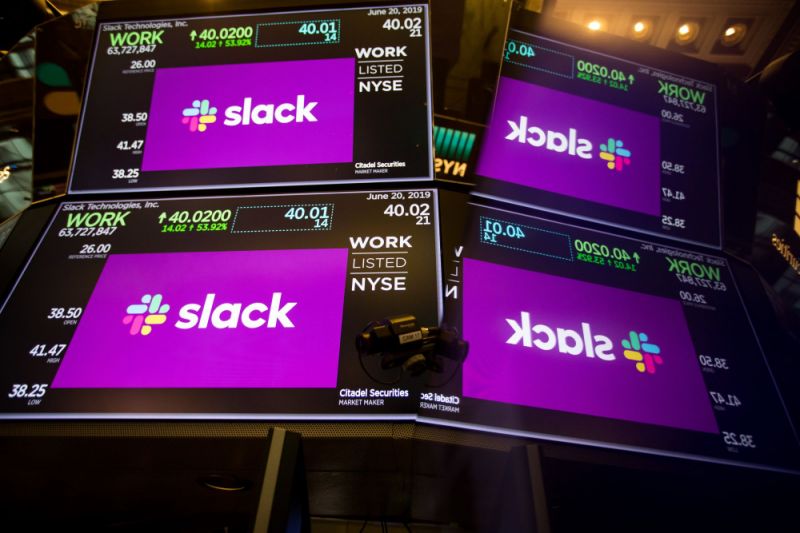
(Bloomberg) — Slack Technologies Inc. projected slower sales growth for the second half of the year, signaling that strong competition may dent the software maker’s rapid rise.
Revenue will be $154 million to $156 million in the fiscal third quarter, reflecting a year-over-year increase of 46% to 48%, the San Francisco-based company said Wednesday in a statement. Analysts, on average, estimated $154.2 million, according to data compiled by Bloomberg.
In the period ended July 31, sales jumped 58% to $145 million. Slack reported an adjusted loss of 14 cents a share for the quarter, compared with analysts’ estimates of 19 cents.
Slack reported results for the first time since completing a direct listing on the New York Stock Exchange in June that made the software maker a publicly traded company. While there is a free version of the company’s software, Chief Executive Officer Stewart Butterfield has sought to increase the number of large companies that pay to use the workplace communications product. Slack will have to maintain soaring growth to please investors while competing against the world’s largest software maker, Microsoft Corp., as well as Alphabet Inc. and Facebook Inc.
Slack’s shares fell about 15% in extended trading after the earnings release. The stock has climbed 20% to $31.07 since the company went public, though it also has dropped about 20% from its closing high of $38.62 on its first day of trading June 20.
The company raised its fiscal 2020 sales forecast to $603 million to $610 million, which would mean an annual growth rate of 51% to 52%. Analysts, on average, projected $607.2 million.
Slack had been one of Silicon Valley’s most-talked about unicorns, raising about $1.3 billion in total funding, and gaining a valuation of $7.1 billion in a funding round in August 2018. The company has sought to emphasize that it’s more than just an office messaging platform where employees chat using memes, GIFs and emojis. The system connects to companies’ other applications in an effort to streamline corporate work flows.
For Slack, the key to growth is fueling demand among large businesses. Less than 1% of Slack’s customer base was made up of large customers that spend more than $100,000 a year, according to Bloomberg Intelligence analyst Andrew Eisenson.
The software maker said it had 720 of those big-spending customers in the last quarter.
Bloomberg Beta, the venture capital arm of Bloomberg LP, is an investor in Slack.
To contact the reporter on this story: Nico Grant in San Francisco at [email protected]
To contact the editors responsible for this story: Jillian Ward at [email protected], Andrew Pollack
<p class="canvas-atom canvas-text Mb(1.0em) Mb(0)–sm Mt(0.8em)–sm" type="text" content="For more articles like this, please visit us at bloomberg.com” data-reactid=”30″>For more articles like this, please visit us at bloomberg.com
©2019 Bloomberg L.P.






